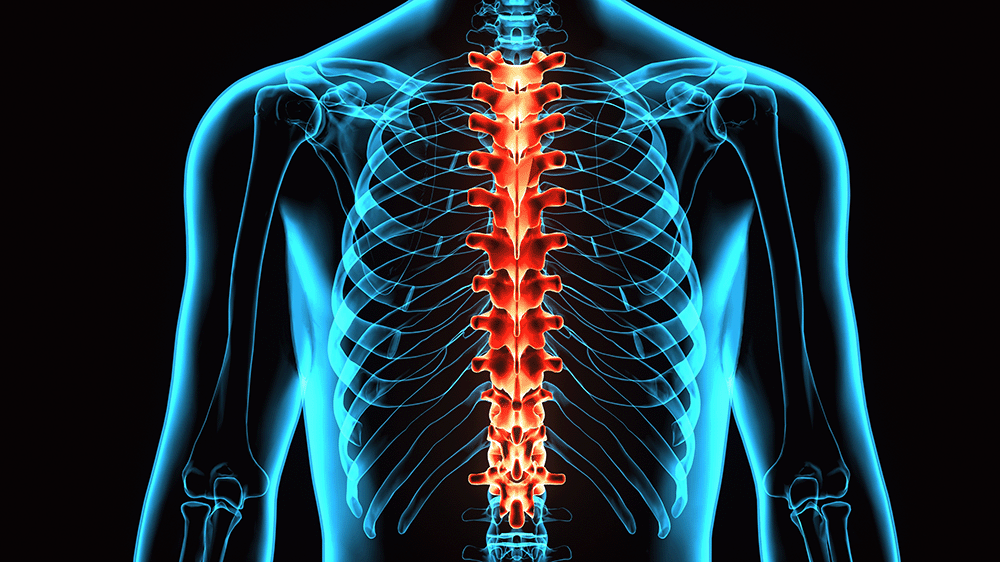Josh’s Tips & Tricks: Thoracic Mobility Exercises
Intro
Hello golfers, welcome to this week’s tips & tricks. I have some more exercises for you to practice this week that can also be used as part of a warm up. I drove down to Cornwall at the end of last week and after sitting in a car for 3 hours it’s fair to say my back was stiff. Having some exercises to open up the rotation of the spine can help get your body more prepared for the golf swing and reduce injury risk.
The Thoracic Spine
Structure and motion of the thoracic spine
The thoracic spine is the middle section of the spine. It starts at the base of the neck and ends at the bottom of the ribs. It is the longest section of the spine, consisting of 12 vertebrae, labelled T1 at the top through to T12 at the bottom. The shape of the vertebrae in the thoracic region form a kyphotic curve. The spinal column as a whole is formed by 33 individual vertebrae, these interlocking bones help protect the spinal cord from injury, while allowing great flexibility for the body to move. Between the vertebral bones are intervertebral discs that provide cushioning for the vertebrae and flexibility for the spine. The thoracic spine is also surrounded by muscles, nerves, tendons and ligaments that help with movement and flexibility.

What causes loss of thoracic spine mobility?
Sedentary lifestyles affect a significant proportion of the population. Prolonged sitting has progressively become the normal in the workplace, transportation and modern technology has made this more apparent. Recent research has found an association between prolonged sitting and increased neck, shoulder and low back pain. Often spending all day sitting causes office workers to hunch forward, keep their head forward, and sit with a flexed upper back. Staying in a hunched over position for several hours per day reduces mobility in the thoracic spine. Research has found that individuals who are generally sedentary develop less thoracic mobility, compared to low activity individuals and physically active individuals. The more you move this will improve thoracic spine mobility for individuals of all ages.
Age related changes to your spine also affect thoracic spine mobility. Loss of disc height and osteoarthritic change in facet joints will result in a stiff thoracic spine. This will often affect your shoulder mobility as well, reducing your ability to swing a golf club. It is really important to exercise to improve your mid back mobility and shoulder mobility to combat the age related changes. It is important to keep your body strong and moving. Activities like swimming are great for upper body mobility and strength, breaststroke really helps with thoracic spine extension.

Important movements in the thoracic spine for golf
It is really important to have good mobility in the thoracic spine for playing golf. Improving mobility in this region especially into thoracic axial rotation and thoracic extension can have great advantages for your golf swing. Most of the rotation in your golf swing should be coming from your thoracic spine. Many golfers who lack good thoracic mobility will make other compensatory movements.
They will try to gain rotation through the lumbo-pelvic region by making compensatory movements such as changes in their leg movements, buckling their knees inwards or straightening the knee joint to gain rotation. Other faulty movements include the arms becoming disconnected from the body to try and increase the backswing. This comes at a cost by reducing club head speed due to the lack of separation between upper and lower body.
Poor Thoracic rotation places stress on other areas like the lumbar spine, cervical spine and shoulders, increasing the risk of injury to the lumbar spine, cervical spine, shoulders and other areas of the body, especially when combined with overuse of these movements. Thoracic rotation and thoracic extension are vital to an efficient and robust golf swing.

Thoracic Mobility Exercises
Take a look at the following video to see some thoracic mobility exercises.
Summary
Improving thoracic mobility can help in your everyday life as well as your golf swing. You will always feel better after completing some exercise, especially when you see how it improves your golf.
I work with people who swing the golf club in all different ways. Lots of these people have physical limitations, including poor thoracic mobility. If you would like some help with your golf swing and would like me to assess your thoracic mobility then CLICK HERE TO BOOK A LESSON NOW.
Catch you soon.
Cheers,
Josh

